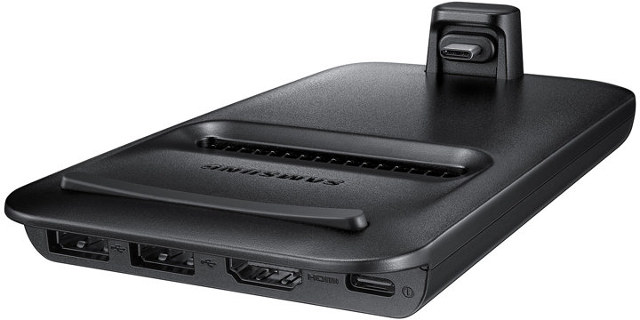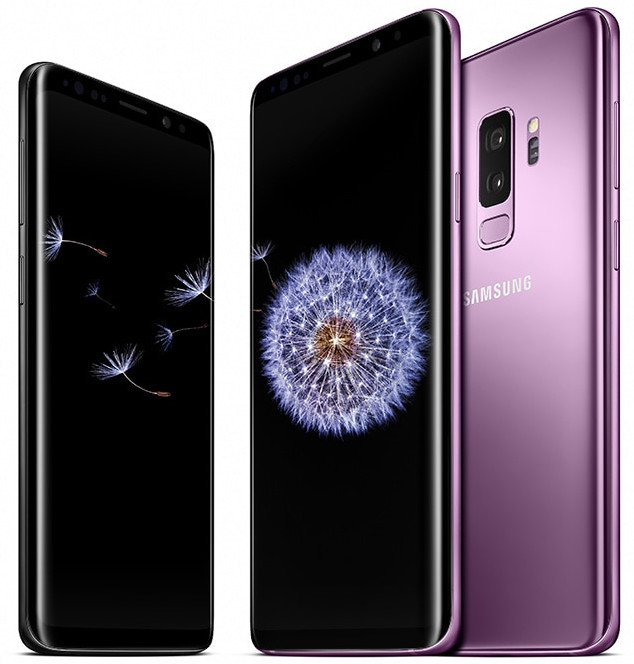After various leaks on the web, Samsung has now officially launched their flagship smartphones – Samsung Galaxy S9/S9+ – at Mobile World Congress 2018. The phones look very much like last year’s Samsung S8/S8+ smartphones, but include faster processors with either Qualcomm Snapdragon 845 or Samsung Exynos 9810, better cameras (e.g. super slow motion mode @ 960 fps, low light improvements), some design tweaks (fingerprint scanner under the camera instead of on the side), and some new software features, like AR Emoji that creates your own virtual avatar based on your photo.
Samsung Galaxy S9/S9+ specifications:
- SoC
- Qualcomm Snapdragon 845 octa-core processor with four Kryo 385 cores @ up to 2.8 GHz, four Kryo 385 cores @ up to 1.7 GHz, Adreno 630 GPU; 10nm
- Samsung Exynos 9810 oct-acore processor with four Exynos M3 core @ up to 2.7 GHz (Anandtech claims the max frequency can only be achieved when one core is running), four Cortex A53 cores @ up to 1.7 GHz, Arm Mali-G72MP18 GPU; 10nm
- System Memory – S9: 4GB RAM, S9+: 6GB RAM
- Storage – 64GB/128GB/256GB + Micro SD Slot (up to 400 GB)
- Display
- S9 – 5.8″ Quad HD + Curved Super AMOLED (2960×1440), 18.5:9 aspect ratio (570ppi)
- S9+ – 6.2″ Quad HD + Curved Super AMOLED (2960×1440), 18.5:9 aspect ratio (529ppi)
- Note for both: Default resolution is Full HD+ and can be changed to Quad HD+ in Settings.
- Camera
- S9
- Rear: Super Speed Dual Pixel 12MP AF sensor with OIS (F1.5/F2.4)
- Front: 8MP AF (F1.7)
- S9+
- Rear: Dual Camera with Dual OIS
- Wide-angle: Super Speed Dual Pixel 12MP AF sensor (F1.5/F2.4)
- Telephoto: 12MP AF sensor (F2.4)
- 2x optical zoom
- Front: 8MP AF (F1.7)
- Rear: Dual Camera with Dual OIS
- S9
- Video
- Recording – 4K @ 30 or 60 fps; Slow mo: 1080p @ up to 240p, 720p up to 960p
- Playback – MP4, M4V, 3GP, 3G2, WMV, ASF, AVI, FLV, MKV, WEBM containers
- Audio
- Stereo speakers tuned by AKG, surround sound with Dolby Atmos technology
- 3.5mm audio jack
- Cellular Connectivity
- Single SIM: Nano SIM; Dual SIM (Hybrid SIM): Nano SIM + Nano SIM or MicroSD slot
- Enhanced 4X4 MIMO / CA, LAA, LTE Cat.18
- Connectivity – Wi-Fi 802.11 a/b/g/n/ac (2.4/5GHz), VHT80 MU-MIMO, 1024QAM, Bluetooth 5 (LE up to 2Mbps), ANT+, USB type-C, NFC, Location (GPS, Galileo, Glonass, BeiDou)
- USB – USB type C port
- Payment – NFC, MST
- Sensors – Iris sensor, Pressure sensor, Accelerometer, Barometer, Fingerprint sensor, Gyro sensor, Geomagnetic sensor, Hall sensor, HR sensor, Proximity sensor, RGB Light sensor
- Security / Authentication:
- Knox protection: real-time security monitoring and protection.
- Lock type: pattern, PIN, password
- Biometric lock type: iris scanner, fingerprint scanner, face recognition
- Intelligent Scan: multimodal biometric authentication with iris scanning and face recognition
- Battery
- S9: 3,000 mAh; S9+: 3,500 mAh
- Fast Wired Charging compatible with QC 2.0
- Wireless Charging compatible with WPC and PMA
- Dimensions / Weight
- S9 – 147.7mm x 68.7mm x 8.5mm, 163g
- S9+ – 158.1mm x 73.8mm x 8.5mm, 189g
- IP rating – IP68
The processor model and single or dual SIM card support will depend on the country where the phones are sold.

Samsung S9+ gets some other hardware improvements with more RAM, and a dual rear camera compared to S8+ model. Both phones run Android 8 (Oreo) with Samsung Touchwiz. AR Emoji seems to be one of the highlights of the release, where you can create your own avatar, and use it to record videos, or generate stickers for messaging.
Samsung also launched DeX Pad, an update to the DeX Station launched last year, with a more compact design that can fit into your pocket, and with the phone placed horizontally allowing you to use the phone as a touchpad. Dex Pad drops Ethernet, but still comes with a HDMI port (up to 2560×1440), two USB 2.0 ports, and a USB-C port.

The dock will let you run Android on the big screen while charging your phone, as well as virtualized Windows desktops and apps with enterprise-ready VDI (Virtual Desktop Infrastructure) solutions including cloud-based ecosystems from Citrix, VMware and Amazon. No word about Linux on Galaxy progress that I could find.
Galaxy S9 and S9+ smartphone will start selling on March 16, 2018 with Samsung not releasing price information, but for example, CNet reports Galaxy S9 starts at $720 while the Galaxy S9+ starts at $840 (in the US). Check out the product page for further details.

Jean-Luc started CNX Software in 2010 as a part-time endeavor, before quitting his job as a software engineering manager, and starting to write daily news, and reviews full time later in 2011.
Support CNX Software! Donate via cryptocurrencies, become a Patron on Patreon, or purchase goods on Amazon or Aliexpress







Got to participate in än survey a week ago regarding Linux on Galaxy. So there is something moving in the background.
The question in the survey that disturbed me the most was “how much are you willing to pay to run Linux on your galaxy device?”
@Anton
Now that you mention it.. I took that survey too, and if my memory serves me correctly I answered “0 to $10” to that last question.
Just wondering, could that survey question be in relation to the price of the dock (which is quite pricey)?
@blu
I think not, because it was specific to Linux, and the maximum price was something around $100.
Samsung has some work to do to port Linux to the phone, and it’s probably a fairly low volume market, so it’s that’s why they may want to charge for it.
@cnxsoft
Purists like the command line on Linux but Smartphones these days are screen touch, drag and drop, tap to select etc.
So what is the real gain to a Linux smartphone, will it improve battery life, make calls cheaper or sound more clear. Can users unlock the sim to any network easier?
@theguyuk
That’s for the desktop mode. Android on the Go, and Linux at the office / home.